Laptop Mag Verdict
The Android-powered ASUS Transformer Pad TF103C sports a vivid screen, excellent audio and a keyboard dock for $299.
Pros
- +
Bright touch screen
- +
Excellent audio quality
- +
Keyboard included
- +
Runs latest Android software
- +
Good performance for the price
Cons
- -
Cramped keyboard
- -
Stiff touchpad
- -
Poor camera quality
Why you can trust Laptop Mag
When it comes to buying an Android tablet on the cheap, there are a glut of choices from vendors as diverse as Amazon, Fuhu and Kobo. Very few, however, include a keyboard for the price. The ASUS Transformer Pad TF103C features a clamshell keyboard dock and the latest Android software for a very affordable $299. Although the touchpad could be better, this is quite the versatile hybrid for the price.
Design
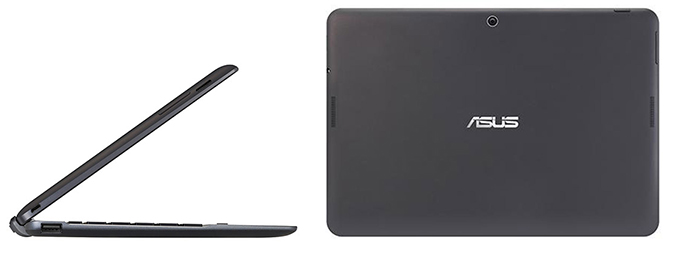
With its nondescript, chunky build, the Transformer Pad TF103C certainly looks like a budget tablet. Unlike more expensive slates in the Transformer Pad series, the TF103C lacks a snazzy aluminum exterior, featuring instead a flat charcoal plastic chassis and keyboard dock (the tablet also comes in white). The exterior isn't as smudge-prone as other plastic builds we've seen; we noticed a few fingerprints on the back of the tablet after extensive handling. On the positive side, the soft-touch finish feels great beneath the fingers.
The back of the tablet features a silver ASUS logo in the center and a 2-megapixel, rear-facing camera at the top. Twin speakers are subtly located on each side of the rear panel just above the centerline. The volume rocker, microUSB port and microSD card reader are on the left side of the tablet, and a 3.5-mm headphone jack is on the right. On the front of the TG103C, a glossy black bezel frames the 10.1-inch screen, with a 0.3-megapixel front camera slightly off-center to the left.
MORE: Best Tablets You Can Buy For Under $200
At 10.13 x 7.02 x 0.4 inches and 1.25 pounds, the TF103C feels beefy compared with svelte premium slates such as the 1-pound iPad Air and Galaxy Tab S 10.5, but it is on a par with comparable budget tablets like the Lenovo A10 (10.4 x 6.9 x 0.35 inches, 1.2 pounds). With the keyboard attached, the TF103C jumps to 0.78 inches thick and 2.5 pounds.
Docking
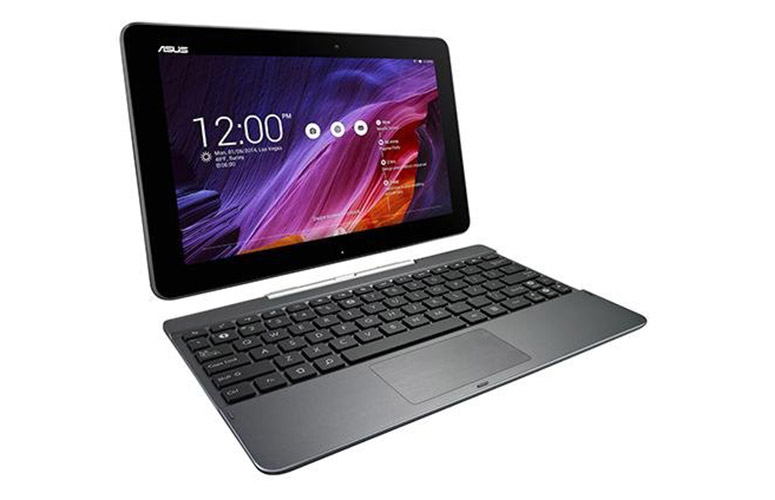
Click to EnlargeThe tablet connects to the clamshell keyboard dock via a port along the bottom edge. Prongs on each side of the dock's connector provide extra stability. Once attached to the dock, the tablet feels very secure -- the hinges rotate smoothly while holding the tablet firmly upright. The only problem we noticed was that occasionally the tablet failed to recognize that it was connected to the keyboard.
Display
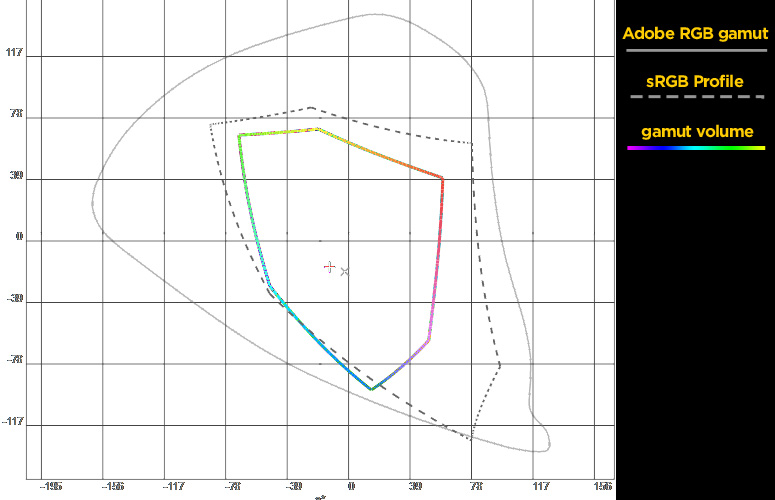
Click to EnlargeThe TF103C's 10.1-inch 1280 x 800 touch screen isn't as sharp as the 1080p-and-higher panels we've seen on the latest premium tablets, but it boasts vivid colors and fairly wide viewing angles. When we watched an HD trailer for "Transformers: The Age of Extinction," Optimus Prime's red and blue armor popped, and we could hold the tablet at a 45-degree angle without causing the colors to wash out. Like most glossy touch screens, however, the display suffers from quite a bit of glare. This can make watching videos difficult if you're viewing the screen at an angle.
When we measured the brightness of the screen using our light meter, the tablet averaged 361 nits. This easily outshines the relatively dim Lenovo A10 (280 nits). The category average, by contrast, is nearly as bright as the TF103C (330 nits).
Unfortunately, the display suffers from poor color accuracy. Using our colorimeter, we measured a Delta E rating of 10.5 (a score of 1 or lower is ideal). The Lenovo A10, in comparison, has a Delta E of 1.2. Color output on the TF103C is similarly lackluster, as the screen could only output 59.4 percent of the sRGB color gamut -- well below the category average of 86 percent. The Lenovo A10 is slightly better, with an output of 72.1 percent.
MORE: Chromebook vs. Tablet: Which Should You Buy?
Audio
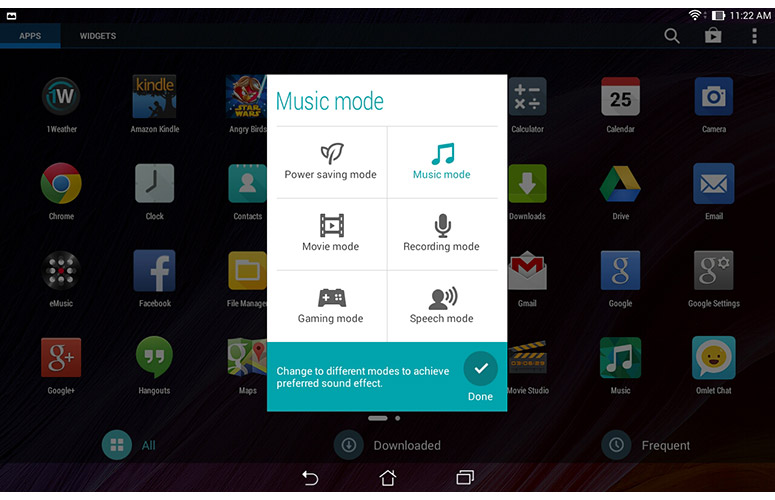
Click to EnlargeThe Transformer Pad TF103C's backward-facing speakers impressed us with their fidelity and volume, although bass proved nearly nonexistent. When we queued up Led Zeppelin's "Ramble On," the vocals and guitar riffs sounded crystal clear, but the track's whimsical bass line was nearly inaudible. An Audio Wizard app from ASUS lets you choose among modes for music, movies and games, although switching to the latter two seemed to simply boost the treble.
On the Laptop Audio Test, the TF103C registered 73 decibels from 13 inches away, quieter than both the Lenovo A10 (86 dB) and the category average (79 dB). Even with the sound cranked to the max, however, we didn't notice any distortion.
Keyboard and Touchpad
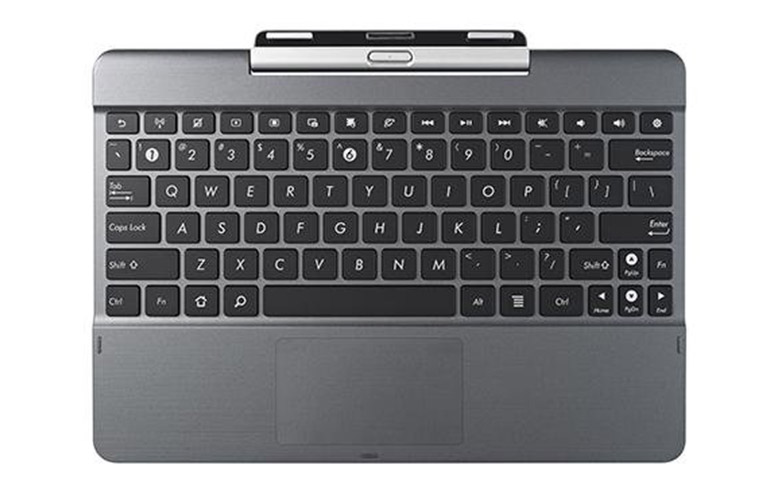
Click to EnlargeLike its Windows-based sibling, the Transformer Book T100, the TF103C ships with a keyboard dock at no extra cost. The keyboard looks virtually identical to the one included with the T100, with a slightly different ordering of the function row and Android-specific keys (home, search) replacing the Windows and Alt keys.
The keys on the TF103C's keyboard offer plenty of vertical travel (1.88mm) and tactile feedback, but the layout is uncomfortably cramped. When we rested our left thumb on the spacebar, for example, our palm constantly brushed the touchpad, causing the cursor to jump around the screen.
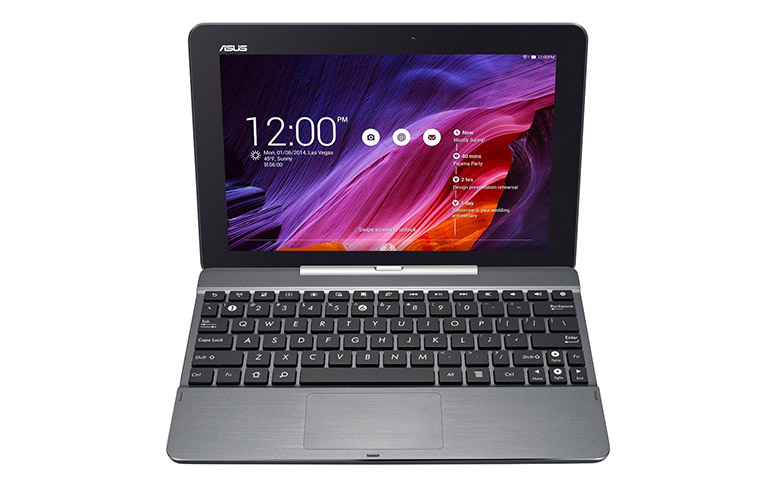
Click to EnlargeAnother annoyance is the lack of an indicator light letting you know that Caps Lock has been enabled. Instead, an icon appears in the notification drawer. However, this icon isn't visible when you're on the lock screen, which can make inputting passwords difficult.
The 3.2 x 1.75-inch touchpad proved stiff and frustratingly small. It also features an unusual design, in that the entire right side of the touchpad serves as a right-click button. This differs from traditional laptop touchpads, which recognize a right click only when the bottom right corner is depressed. This is a confusing and unnecessary change, as the right-click function isn't even utilized in the Android operating system.
OS and Interface
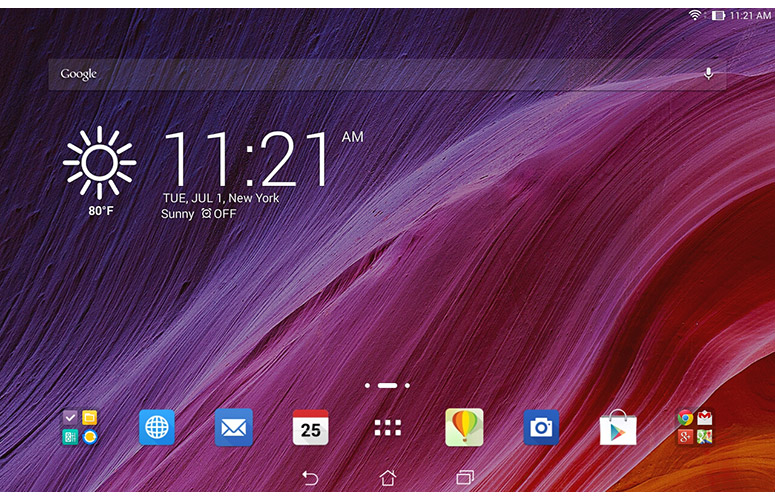
Click to EnlargeThe Transformer Pad TF103C ships with Android 4.4 KitKat, which improves existing Android features like Google Now (more predictive contextual cards, links to helpful apps depending on your searches) and Google Hangouts (support for both SMS and MMS messages, support for HD video calls). KitKat also introduces a host of new features, such as caller ID, which cross-references unknown numbers with nearby businesses; an immersive mode that hides everything except for the app you're viewing; and built-in support for Google Cloud Print.
Like most manufacturers, however, ASUS couldn't help but add its own skin on top of Google's OS. Most of the changes are aesthetic -- icons look squarer and flatter, and menus are more colorful -- but the skin also makes some more substantive modifications. Apps in the app drawer can now be sorted according to All, Downloaded and Frequent.
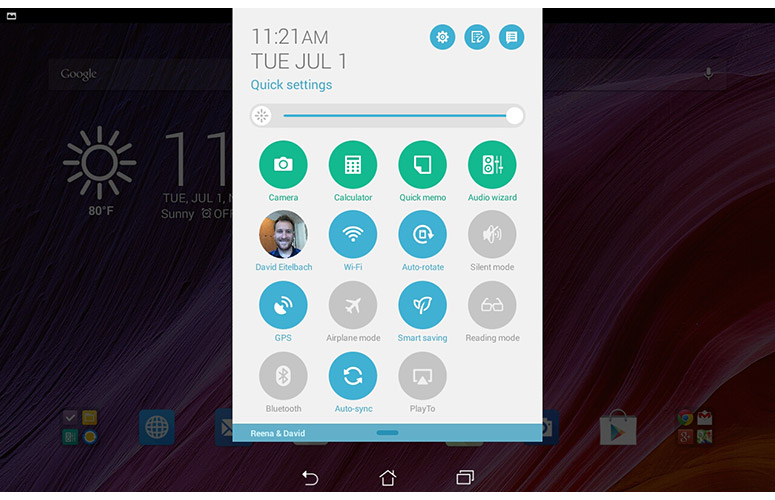
Click to EnlargeFrom the settings menu, you can also add new users for the tablet, each of whom has access to their own apps and content (although storage space is shared). The lock screen has been customized to allow users to easily switch profiles without having to restart the tablet -- just select your picture from the bottom left and swipe to log in.
Another addition is ASUS customized settings, accessible through the Android settings menu. From here, you can select the screen shot file format and tweak the quick-settings list (this appears by clicking on the rightmost icon at the top of the drop-down Android notification drawer).
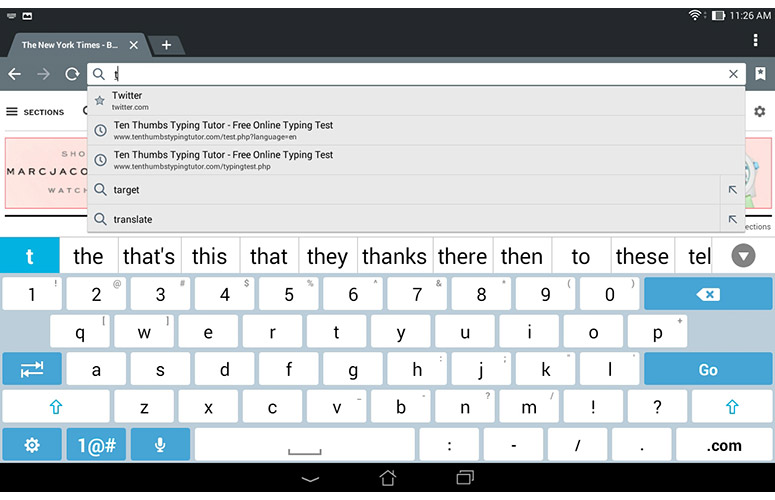
Click to EnlargeFinally, ASUS added a custom on-screen keyboard. This adds a new feature called easy flicking (flicking a key upward changes it to upper case, while flicking downward changes it to symbols), but otherwise it's identical to other custom Android keyboards, with swipe input, a user-defined dictionary and a dedicated number row at the top. Sadly, it doesn't seem possible to use easy flicking and swipe input simultaneously. We prefer Google Keyboard, as it automatically recognizes unusual names from your contacts list.
MORE: Top 25 Android Tablet Apps
Apps
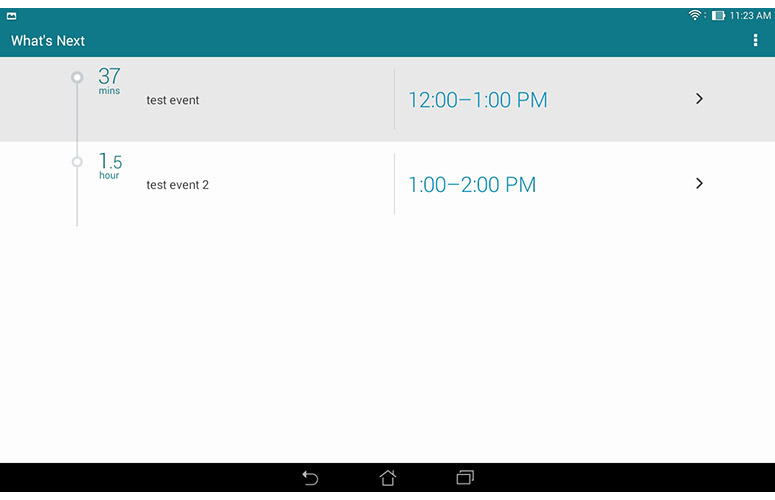
Click to EnlargeThe TF103C features a handful of preloaded apps, most of which are from ASUS. These include the AudioWizard app mentioned earlier, and new apps for the browser, clock, contacts and email. There's also an AccuWeather-powered weather app, a sticky note app (Quick Memo, which annoyingly forces the screen orientation into portrait mode), and a note-taking app called SuperNote.
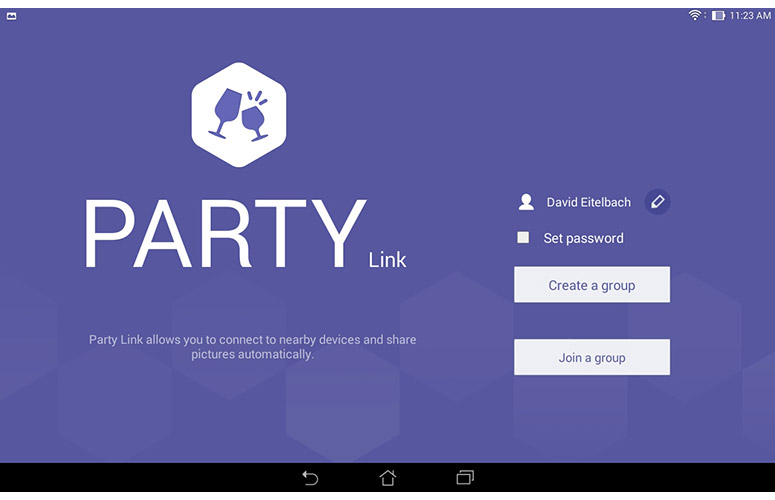
Click to EnlargeMore intriguing is What's Next, which syncs with the weather and calendar apps to show you tomorrow's weather and upcoming calendar events. The app also comes with a nifty widget, which provides the same information directly on your home screen.
Third-party apps include Amazon Kindle, eMusic (a music-streaming service similar to Spotify), Facebook, Flipboard and Zinio. There's also Omlet Chat, a privacy-centric messaging app, and Party Link, which lets you connect to nearby devices and share pictures automatically.
Storage and Expansion
The TF103C comes with 16GB of storage, which can be expanded by as much as 64GB with a microSD card.
Heat
The TF103C remained relatively cool during our testing. After streaming video on Hulu for 15 minutes at full screen, the back of the tablet averaged 87 degrees Fahrenheit, the touchpad 85 degrees, and the space and the G and H keys 78 degrees. We consider anything above 95 degrees uncomfortable.
Cameras

Click to EnlargeThe cameras proved to be the Transformer Pad's TF103C's weakest components. Whereas most budget slates like the Lenovo A10 sport at least a 5-megapixel rear-facing camera, ASUS equipped the TF103C with a meager 2-megapixel shooter. The front-facing camera likewise has a mere 0.3-megapixel resolution.

Click to EnlargePredictably, the quality of pictures and video was poor. When we took an evening-time photo of an Art Nouveau peacock poster, the bird's brilliant blue plumage looked faded, and we could barely make out the text at the top. A headshot we took using the front-facing camera looked similarly grainy and washed out.
MORE: Which Smartphones Have the Best Cameras?
Outdoor photos fared little better. In a picture we took of the George Washington Bridge, trucks crossing the bridge appeared blurry and indistinct. We also noticed pixelation in areas of solid color like the sky.
We did not notice an improvement when capturing video. Playback was smooth, but details remained fuzzy and colors were muted.
[sc:video id="FtdXE1cToeChoi7OkQeXQLW-Uu-Taam8" width="575" height="398"]
The ASUS camera app is similar to the stock Android application. On the left are buttons to switch the camera; select an effect such as grayscale, sepia and cartoon; and modify the camera settings (these include the camera resolution, anti-shake enhancement and burst speed). On the right, you'll find the buttons to take a photo, record a video and choose a mode (HDR, panorama and selfie, among others).
Performance
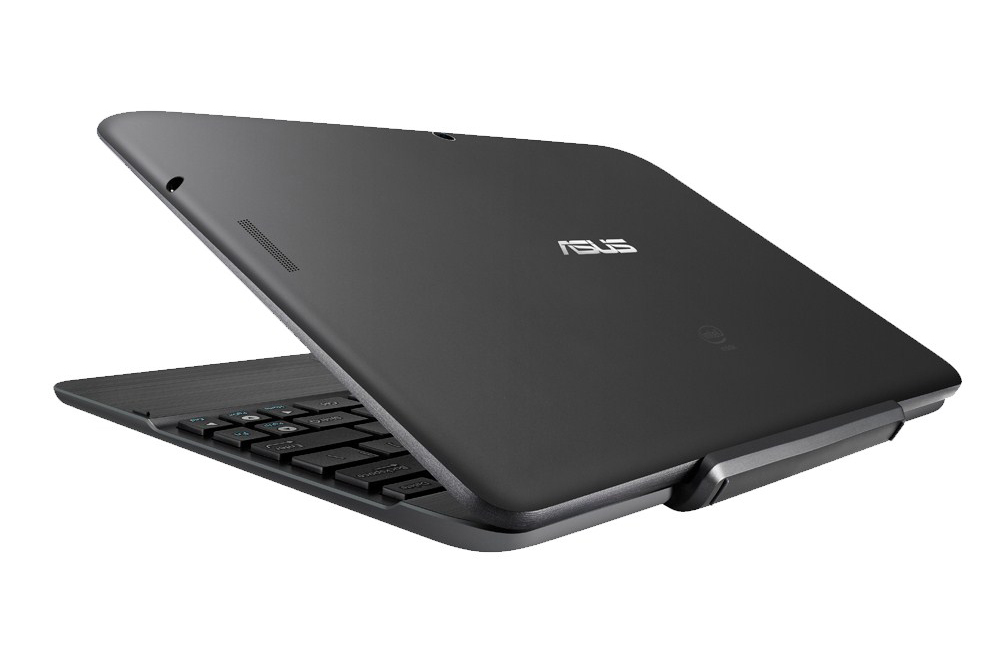
Click to EnlargeThe Transformer Pad TF103C packs a 1.33-GHz Intel Atom Z3745 quad-core processor -- a slightly faster model than the CPU on the Transformer Book T100 -- and 1GB of RAM. The tablet performed well on our objective tests and in everyday use. When we played "Angry Birds Star Wars," for example, gameplay remained consistently smooth.
On our synthetic benchmarks, the TF103C outperformed the Lenovo A10, which uses a 1.3-GHz MTK 8121 quad-core ARM Cortex-A7 and 1GB of RAM. On Geekbench 3, which measures multicore performance, the TF103C notched a score of 2,376. That beats both the category average (2,088) and the A10 (1,160).
The TF103C loaded "N.O.V.A 3" in a zippy 17 seconds. This matches the tablet average, and is two seconds faster than the Lenovo A10.
On our VidTrim test, in which we transcode a 204-MB 1080p video to 480p, the TF103C took 5 minutes and 22 seconds. This was much faster than the A10 (10:30) and the category average (11:58).
Graphics performance on the TF103C is generally good. The tablet maxed out the 3DMark Ice Storm and Ice Storm Extreme benchmarks, and achieved a score of 14,569 on the 3DMark Ice Storm Unlimited test. This showing blows past the category average of 9,874, as well as the A10's anemic 2,844.
Battery Life
The TF103C's lithium-polymer battery doesn't last quite as long as the competition. When we ran the Laptop Battery Test (continuous Web surfing via Wi-Fi at 150 nits of brightness), the tablet turned in a runtime of 7 hours and 18 minutes. This falls short of the tablet average (8:02) and the Lenovo A10 (8:34).
MORE: 10 Tablets with the Longest Battery Life
Verdict
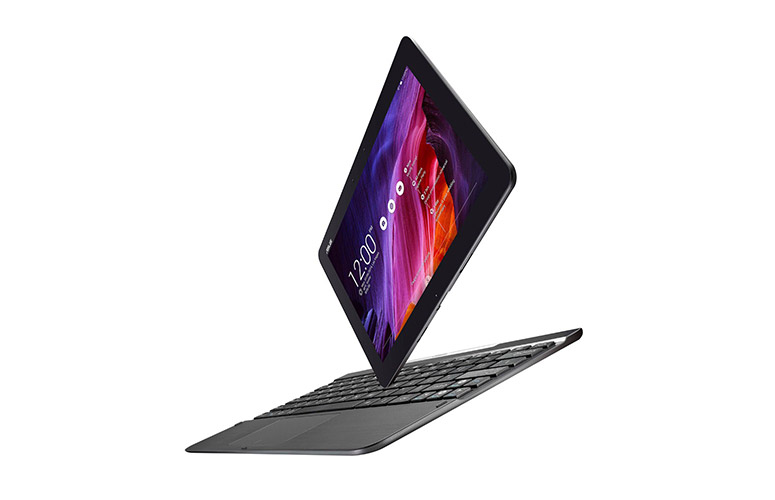
Click to EnlargeAs a budget tablet, the ASUS Transformer Pad TF103C hits many of the right notes. For $299, it offers a vivid 1280 x 800 touch screen, loud audio, solid Intel Atom performance and, most importantly, a clamshell keyboard dock. The fact that it runs Android 4.4 KitKat is a major plus as well. However, the keyboard feels cramped, and the touchpad is uncomfortably stiff. Photos and videos taken with the TF103C's low-resolution cameras (2-megapixel rear, 0.3-megapixel front) also look grainy.
If an included keyboard isn't your first consideration when buying a budget Android slate, you might want to take a look at the $249 Lenovo A10, which offers longer battery life but weaker performance. But if you want a mini laptop and tablet in one, the TF103C is a good choice.
Asus Transformer Pad TF103C Specs
| Brand | ASUS |
| CPU | 1.33 GHz Intel Atom Z3745 Quad-Core CPU |
| Camera Resolution | 2 MP |
| Card Readers | microSD |
| Company Website | www.asus.com |
| Display Resolution | 1280 x 800 |
| Display Size | 10.1 |
| Front-Facing Camera Resolution | 0.3 |
| Has Bluetooth | Yes |
| OS | Android 4.4.2 |
| Ports | microUSB |
| RAM Included | 1GB |
| Size | 10.13 x 7.02 x 0.4 inches (10.13 x 7.02 x 0.78 inches with dock) |
| Storage Drive Size | 16GB |
| Storage Drive Type | Flash Memory |
| Weight | 1.25 pounds (2.5 pounds with dock) |
| Wi-Fi | 802.11a/b/g/n |
David was a writer at Laptop Mag. His coverage spanned how-to guides, reviews, and product rankings. He reviewed Asus, Lenovo, and Gigabyte laptops; guided readers on how to do various things in Excel, and even how to force quit an app in macOS. Outside of Laptop Mag, his work has appeared on sites such as Tom's Guide and TechRadar.
